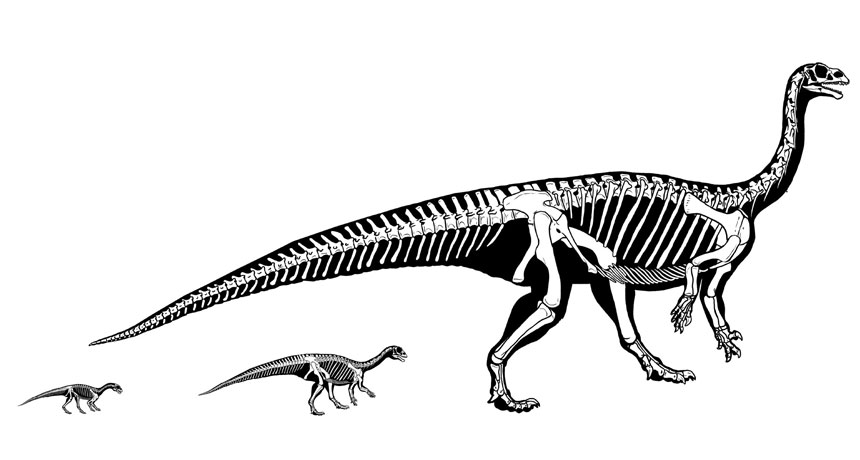This early sauropod went from walking on four legs to two as it grew
Center of mass shifts led to a rare change in walking style for a long-necked dinosaur relative

GROWING UP As Mussaurus patagonicus grew, the long-necked dinosaur’s center of mass shifted back toward its hips and tail, letting it go from a four-legged to two-legged gait even as it ballooned from the size of a chick to that of a rhinoceros.
A. Otero et al./Scientific Reports 2019







